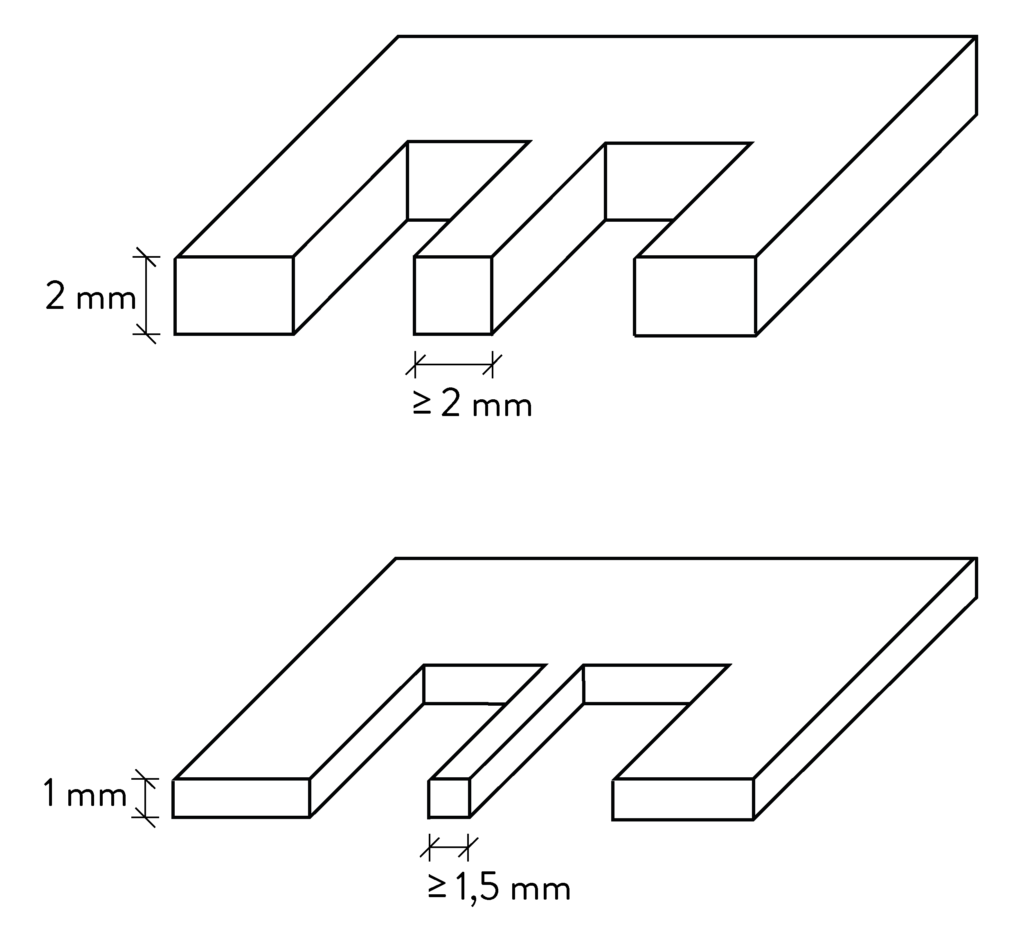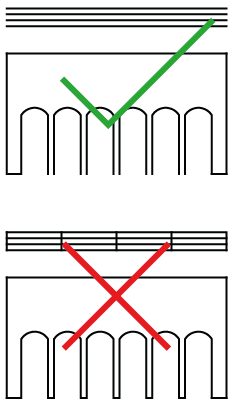
file set up for blade plotter
In order to draw the pieces correctly, you should proceed as if you were cutting them manually: it is necessary to draw the geometries with the real measures already reduced to the scale of the model and in millimetre units of measurement. The drawings of the pieces to be cut with the plotter must be positioned inside a frame with the longer side placed horizontally and the same dimension of the material in your possession.
The drawings of the pieces to be cut must be placed in the frame with at least 10 mm of distance from the edge, starting from the bottom left-hand corner. Assign to the frame a different layer from the one assigned to the elements to be cut.
Arrange the pieces to be cut inside the frame with at least 5 mm distance from each other if they are complex or curved shapes, however if the shapes are simple and straight, as in the case of rectangles, the pieces should be joined together to reduce the cutting time.

For pieces that have a perimeter and internal holes, such as a façade with windows, different layers must be assigned to the holes and the perimeter in order to define the correct cutting order.
The vector file must be in .dxf 2000 format in order to be imported into the cutter management program.
To cut several sheets of material, it is necessary to prepare an equivalent number of files.
useful tips
The file used for cutting must contain only the pieces to be cut, the frame and no drawings on frozen or switched off layer. There must be no overlapping lines in the drawing to avoid tears. If you draw with AutoCAD, we suggest using the _overkill command, which, inside a selection window, eliminates all possible overlapping lines keeping only the longest ones.
The machine management software does not recognise complex entities such as groups, regions or splines, so it is necessary to transform them into lines or polylines; if you draw with AutoCAD, we suggest using the _editpl command. If, after this transformation, the polylines have a density of points that is too high, use the _flatten command to decrease it.
In order to avoid producing fragile or unusable pieces, it is necessary to check that in the drawing there are no elements to be cut with dimensions smaller than the thickness of the material and in any case not smaller than 1.5 mm, for example window frames, porches, or decorative elements.

When cutting these types of elements with a width of less than 3 mm, remove the lines orthogonal to the long side (the base lines of the pillars), so as to keep them joined to the sheet to prevent tearing.

with blade plotter it is possible to cut
- paper and cardboard up to 360 gr/sqm;
- white cardboard up to the thickness of 2 mm;
- grey or ivory cardboard up to the thickness of 2,5 mm;
- soft plastic such as polypropylene up to the thickness of 1 mm.
It is not possible to cut
- rigid plastic such as methacrylate.